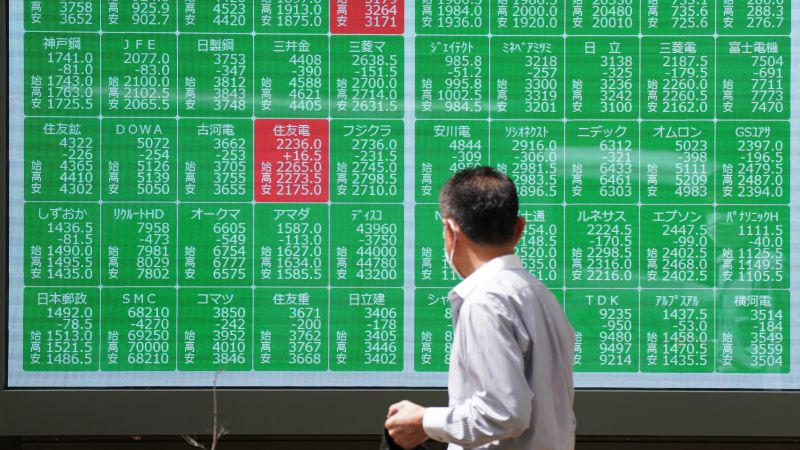Japan’s Nikkei 225 experienced significant losses for a second consecutive day on Friday as traders anticipated further tightening of monetary policy by the country’s central bank. Following the release of weak US economic data, the Nikkei 225 fell by 4.5% on Friday, extending a global stock selloff that began earlier in the week. The Bank of Japan had recently raised interest rates by 15 basis points to 0.25%, its second hike of the year, and announced plans to taper off its policy of bond buying. This move signaled a shift towards normalizing monetary policy after more than a decade of debt-buying, with traders expecting additional rate hikes in the coming months.
The recent rate hike by the Bank of Japan has narrowed the interest rate differential between the United States and Japan, leading to a stronger Japanese yen against the US dollar. The yen’s short positions have been unwinding, with short-sellers closing their positions on the currency. On Friday, the dollar saw a slight rebound against the yen, rising by 0.1% to 149.57. However, the risk of increasing yen volatility poses a threat to the long-running bull market of Japanese equities, particularly impacting the profits of the country’s exporters. The yen has weakened significantly against major currencies over the past four years, playing a role in driving the Nikkei 225 to record highs this year.
Despite strong corporate earnings and governance reforms contributing to the rise of the Nikkei 225, the strengthening of the yen in recent weeks has led to a correction in Japanese equities. The index has fallen by 12% since mid-July, raising concerns about the impact of a stronger yen on exporters’ profits. Citi analysts have noted that the earnings boost from a weak yen is likely to diminish going forward. However, they remain optimistic about Japanese stocks in the long term, as inflation gains traction and a positive wage-price spiral strengthens the economy. The hope is that rising wages and prices can help Japan overcome years of economic weakness.
Across Asia, markets experienced broad declines on Friday. South Korea’s Kospi dropped by 3.3%, Australia’s S&P/ASX 200 fell by 2.3%, Hong Kong’s Hang Seng Index lost 2.1%, and China’s Shanghai Composite was down by 0.5%. On Wall Street, the Dow Industrial Average, S&P 500, and Nasdaq Composite all registered losses, fueled by fresh data indicating a weakening US economy. New jobless claims surged to their highest level since August, with continuing claims reaching the highest level since November 2021. Analysts are now anticipating potential rate cuts by the Federal Reserve, with expectations of three rate cuts this year.
The weak economic data in the US has led to market speculation about possible rate cuts by the Federal Reserve, with the central bank signaling a potential rate cut in September at its recent policy meeting. The ongoing trade tensions and economic uncertainties are contributing to market volatility and investor concerns about the global economic outlook. Overall, the combination of factors such as monetary policy changes, trade disputes, and geopolitical tensions are influencing market dynamics and contributing to heightened volatility in global financial markets. Traders and investors are closely monitoring economic indicators and central bank actions for insights into future market trends and potential investment opportunities.


